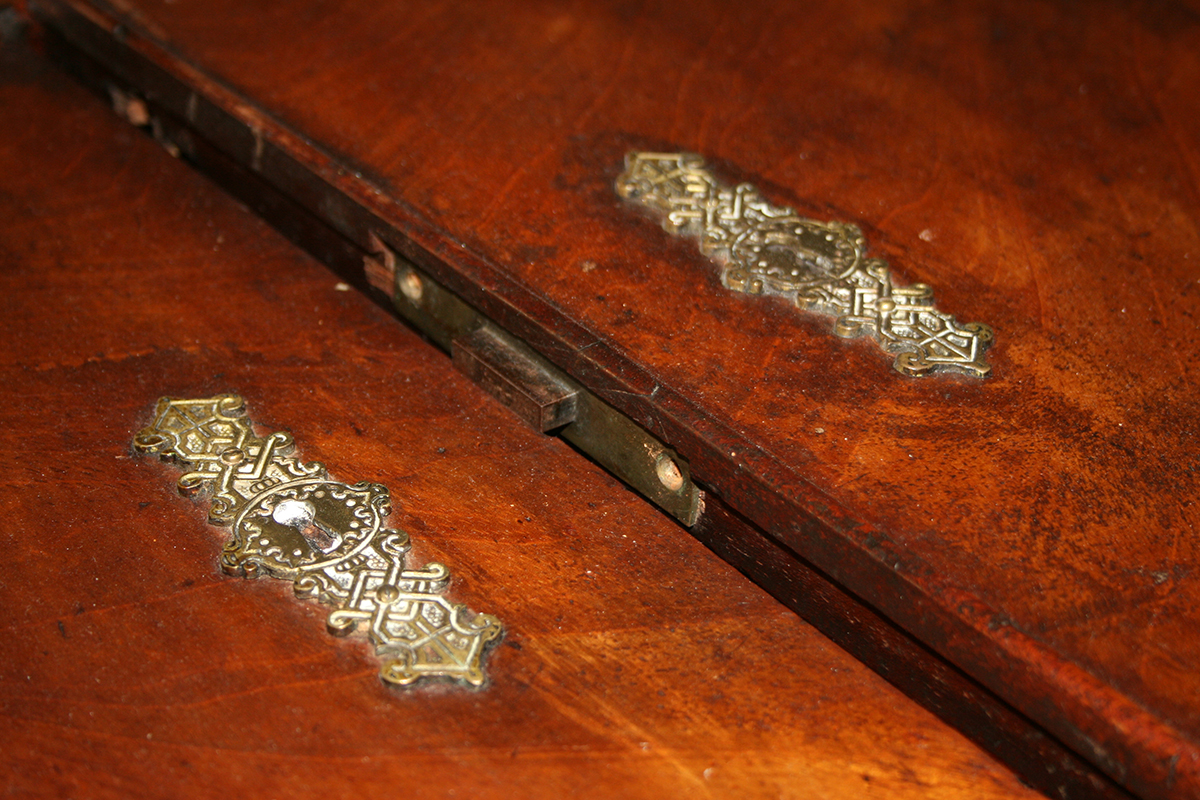A very long restoration
In early 2016, an old secretary desk came to our workshop. In the beginning, it seemed that the restoration process wouldn’t take us very long. Just another large piece of furniture like a number we’d worked on before. But things turned out to be completely different than we expected. Step by step, as we disassembled the elements of the piece, we discovered more and more damage and surprises that had been initially invisible. These were due to both unsuitable storage conditions and the ubiquitous presence of wood-borers.
One of the biggest challenges was the writing surface. The veneer was beyond repair and needed to be replaced. After we removed it, it turned out that the top, warped from years of damp, was also home to insects that had to be exterminated. Other wooden elements were in the same state. We reinforced and stiffened the writing surface with additional layers of wood, and then gave it a new sheet of veneer.
Almost every element of the desk needed thorough repairs – starting with the legs, which were severely damaged in their lower parts. In each of them, damaged fragments had to be cut out and replaced with new ones. The crux of the matter was to retain as much of the original wooden structure as possible. In the end, all of the legs were recovered with mahogany veneer.
We ran into a number of unexpected problems with the decorative mouldings on the upper plinth, probably damaged by impact at some point in the past. The form and profile of the mouldings turned out to be unusual – we couldn’t find anything like them on the market. The only solution was to have special cutters made to order that would allow us to make new mouldings to match the originals.
The remaining elements of the desk – the top assembly, drawers and doors, needed to be stabilised and reconstructed. Where restoration was impossible or original elements were missing, the only option was to reconstruct them using the same types of wood – mahogany, alder and pine.
The drawers, or rather their boxes of alder wood, had succumbed to the ravages of time and insects. Because of the severe structural damage, we were forced to reconstruct the sides and dividers of all of them. The door fronts closing the desk also had structural cracks due to the storage conditions mentioned above. After consulting with other furniture restorers, we decided to reinforce the wooden structure of the doors by inserting slats of new wood. The veneer on the door fronts, however, was in excellent condition, and so we chose to retain it, only filling in cracks with a hard wax.
After almost three years, the desk regained its former glory, and we trust that it will serve its owners proudly for decades to come.
For us, restoring this secretary desk was yet another fruitful experience.
























































